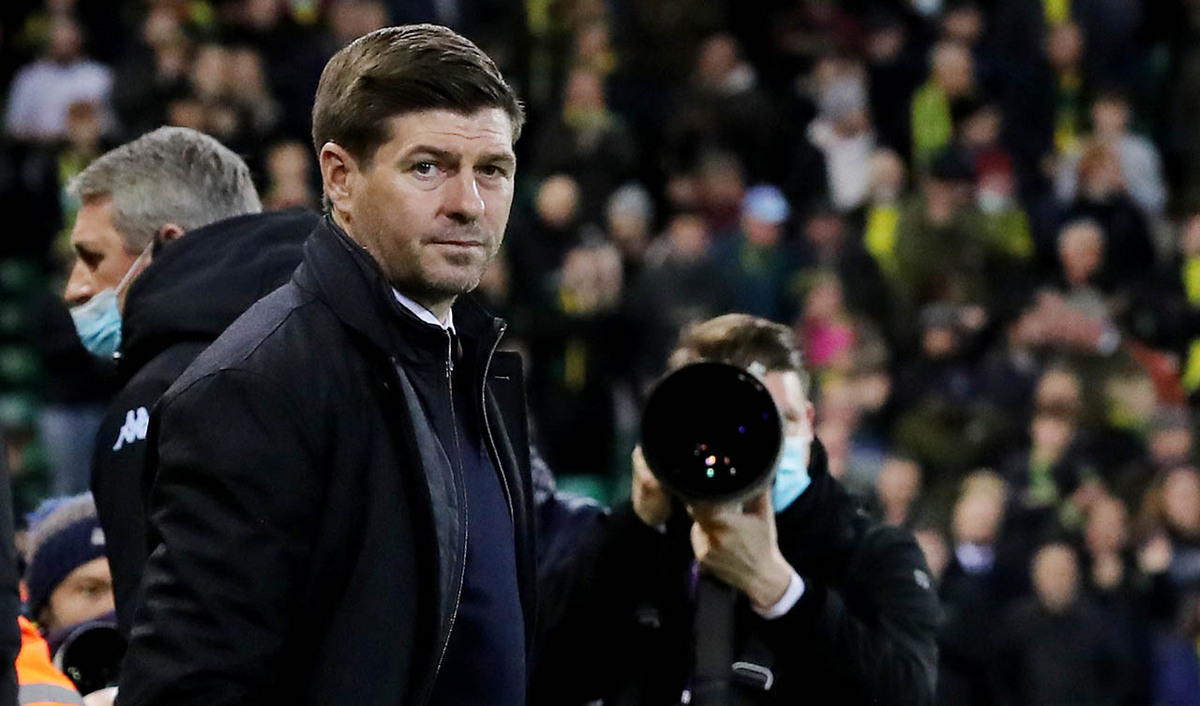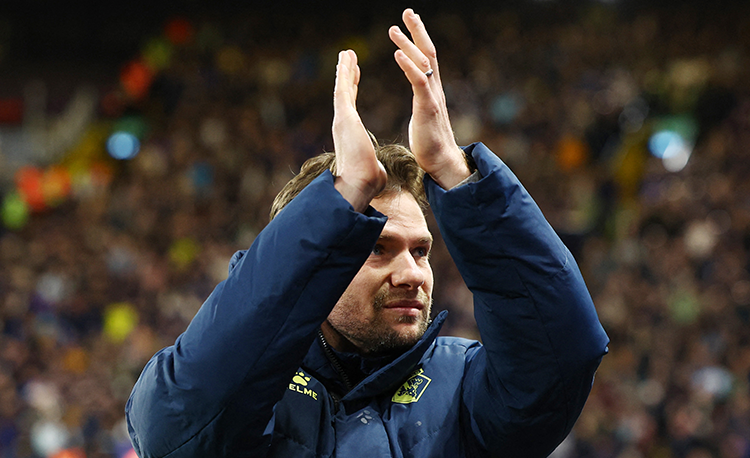You are viewing 1 of your 1 free articles
Creativity in the final third
This session is designed to help a team’s creativity in the final third. It looks to provide opportunities for the players to create goal-scoring chances with runs in behind, combination play, crossing and finishing, individualism and shots from distance.
| Area | Up to 54x44 yards |
| Equipment | Balls, bibs, cones, 4 small target goals, 1 full size goal |
| No. of Players | Up to 14 players +1 goalkeeper |
| Session Time | Breaking Lines Possession: 15mins Three Backlines: 15mins |
This session is designed to help a team’s creativity in the final third. It looks to provide opportunities for the players to create goal-scoring chances with runs in behind, combination play, crossing and finishing, individualism and shots from distance. If a team can use a variation of these attacking methods on a match day, they’ll be hard to defend against.
The ‘three backlines’ element of the session places a significant emphasis on the creativity and decision making of the attacking units.
When looking to develop a team’s creativity it is important that we expose them to different game scenarios and allow them to explore the situations and find the correct solution. With one block against a high line the solutions appear clear, however as time and space condenses the decision-making process becomes more pressured.
This is a session that can be run on a weekly basis and works well as unit work with attack and defence competing.
“If a team can use a variation of these attacking methods on a match day, they’ll be hard to defend against”
BREAKING LINES POSSESSION
We set up a playing area of 30x10 yards made up of three connected 10x10-yard boxes, with four small target goals positioned on the outside corners of the central box, as shown.
We’re using 13 outfield players split into a red possession team of eight and a blue defending team of five. In one end box the reds have a 4v2 overload, while they’re evenly matched with a 1v1 in the central box and have a 3v2 overload in the other end box. The aim for the reds is to work the ball from one end zone to the other and back again.
The coach begins play by serving a ball to the reds in the box where they have the 4v2 possession advantage. After the reds make four consecutive passes in that box, the ball can be passed or dribbled into the middle box where a 2v1 situation is created (if the ball is passed, one red should follow the ball into the central box).
The two reds in the central box then combine to progress the play into the opposite end box, as shown [1a], and one red from the middle box follows the ball into the end zone to create a new 4v2 situation.
[1a]
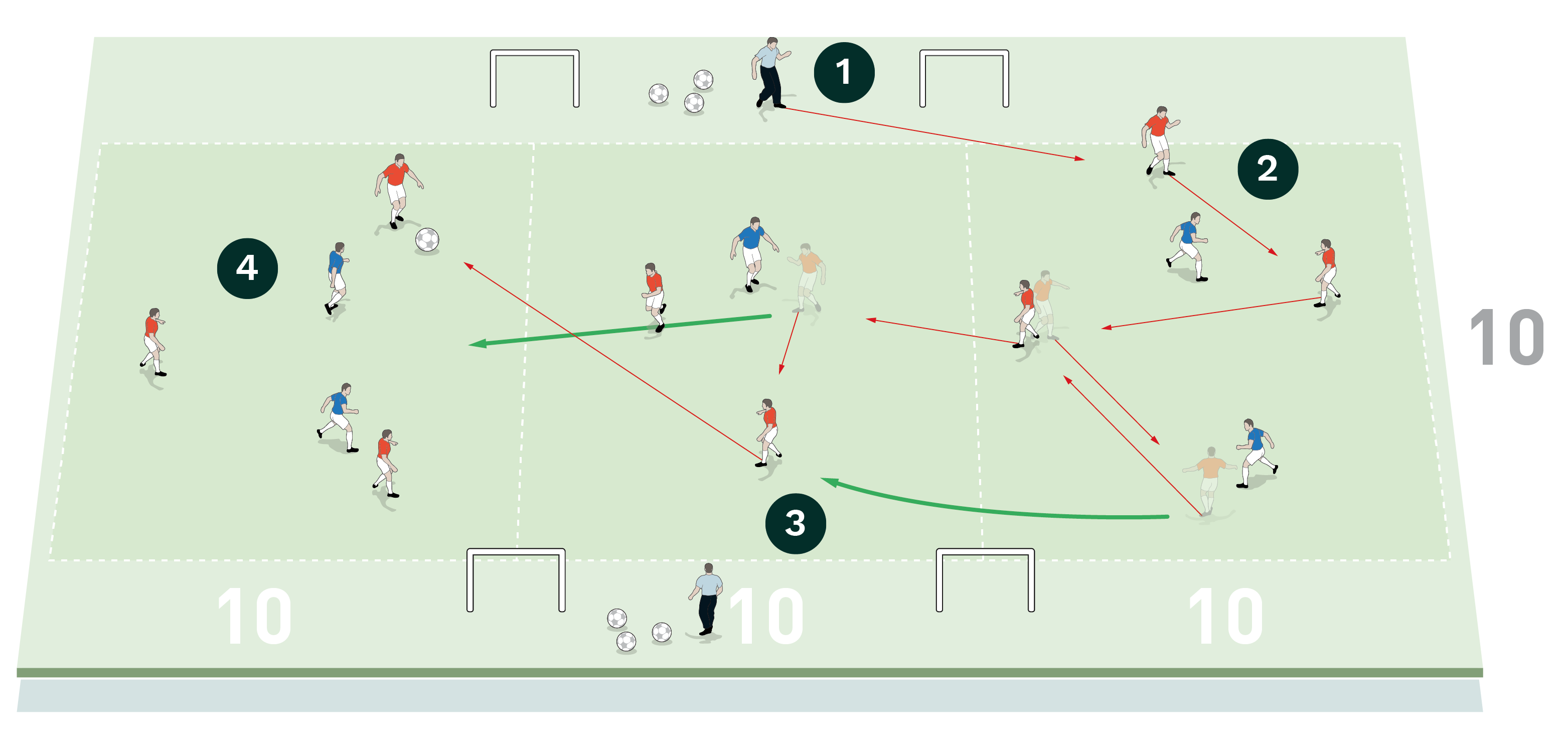
2. After making four consecutive passes in the end zone, the ball can be passed or dribbled into the middle zone
3. One red player follows the ball into the middle zone, creating a 2v1 situation
4. The two reds combine in the middle zone to work the play into the opposite end zone. One red player follows the ball, creating a 4v2 in the end zone
[1b]
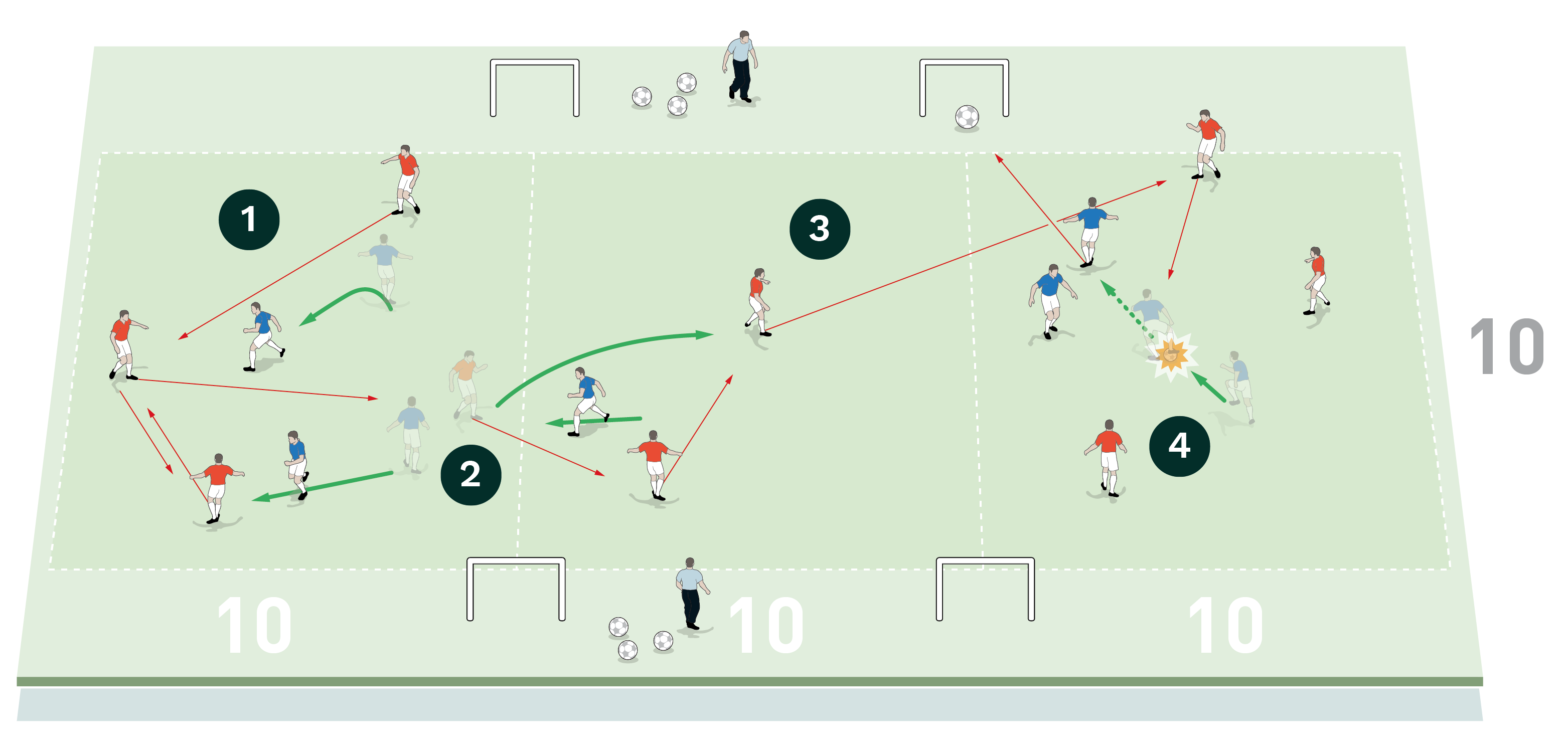
2. As before, one of the red possession players follows the ball into the next zone to keep the team’s overload in each box where the ball is
3. Here the red player doesn’t follow the ball into the end zone in time, giving the blues the opportunity to capitalise on the mistake
4. If the blue defending team wins the ball at anytime in any zone, they must try to score in one of the four mini goals as quickly as possible
“We want to see players keeping possession with good quality passing and receiving, and by using good movement to create angles”
After making four consecutive passes, the reds can begin to work the ball back in the opposite direction in the same manner as before. The practice is continuous working from end to end, but if the defending teams wins the ball at anytime (or in any zone), they must try to score in one of the four mini goals as quickly as possible, as shown [1b].
We want to see players keeping possession with good quality passing and receiving, and by using good movement to create angles. We also want to see players using the five ways to combine: making overlap runs, underlap runs, using give and go passing, takeovers, and ‘jacks’ (players allowing the ball to run through their legs).
THREE BACKLINES
We set up a playing area on half a pitch with a goal and a goalkeeper in their normal positions at one end and four small target goals at the other end. The playing area is split into three zones of 18 yards in length and it is coned off to the width of the penalty area. As the activity progresses the playing area gets shorter in length and the mini goals move up a third at a time.
We’re using 14 outfield players split into six reds who are attacking the main goal, six blues who are defending, and two yellow full backs who support the play of the attackers from outside the playing area.
We run this activity in three blocks, with each block lasting five minutes and with an option for the final block inside the penalty area to be split into two smaller blocks of two minutes and 30 seconds each because of the intensity of the play.
[2a]
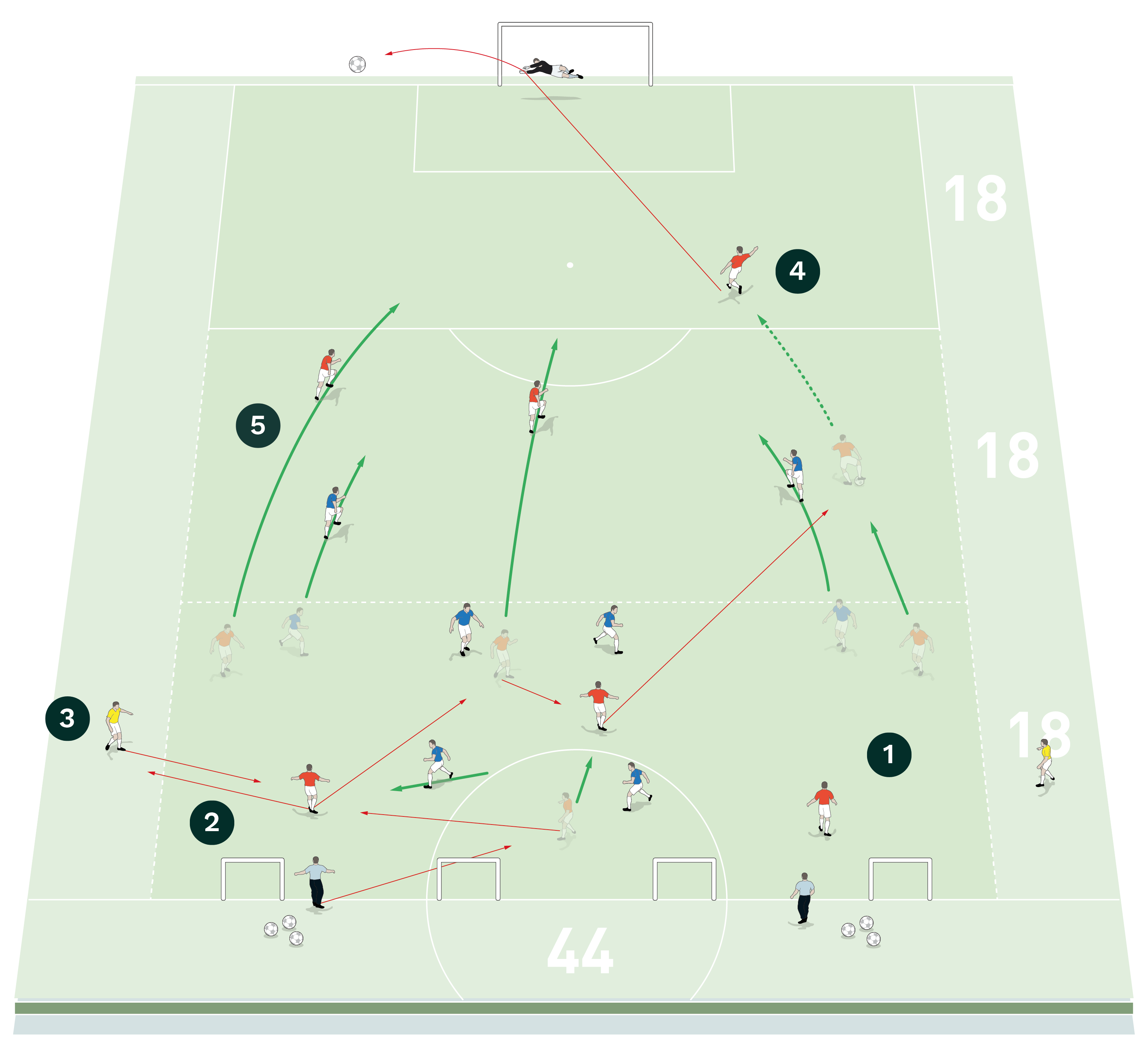
2. The reds combine in the bottom third to create the chance to get in behind the blue backline with through passes and forward runs into the middle third
3. The reds can use either of the yellow full backs to support play from the outside
4. Once a red attacker is played through, they dribble towards goal to finish past the keeper. Two other reds can support the breakout attack
5. As a progression, allow one or two blue defenders to make recovery runs out of the bottom third to defend against the red breakout
[2b]
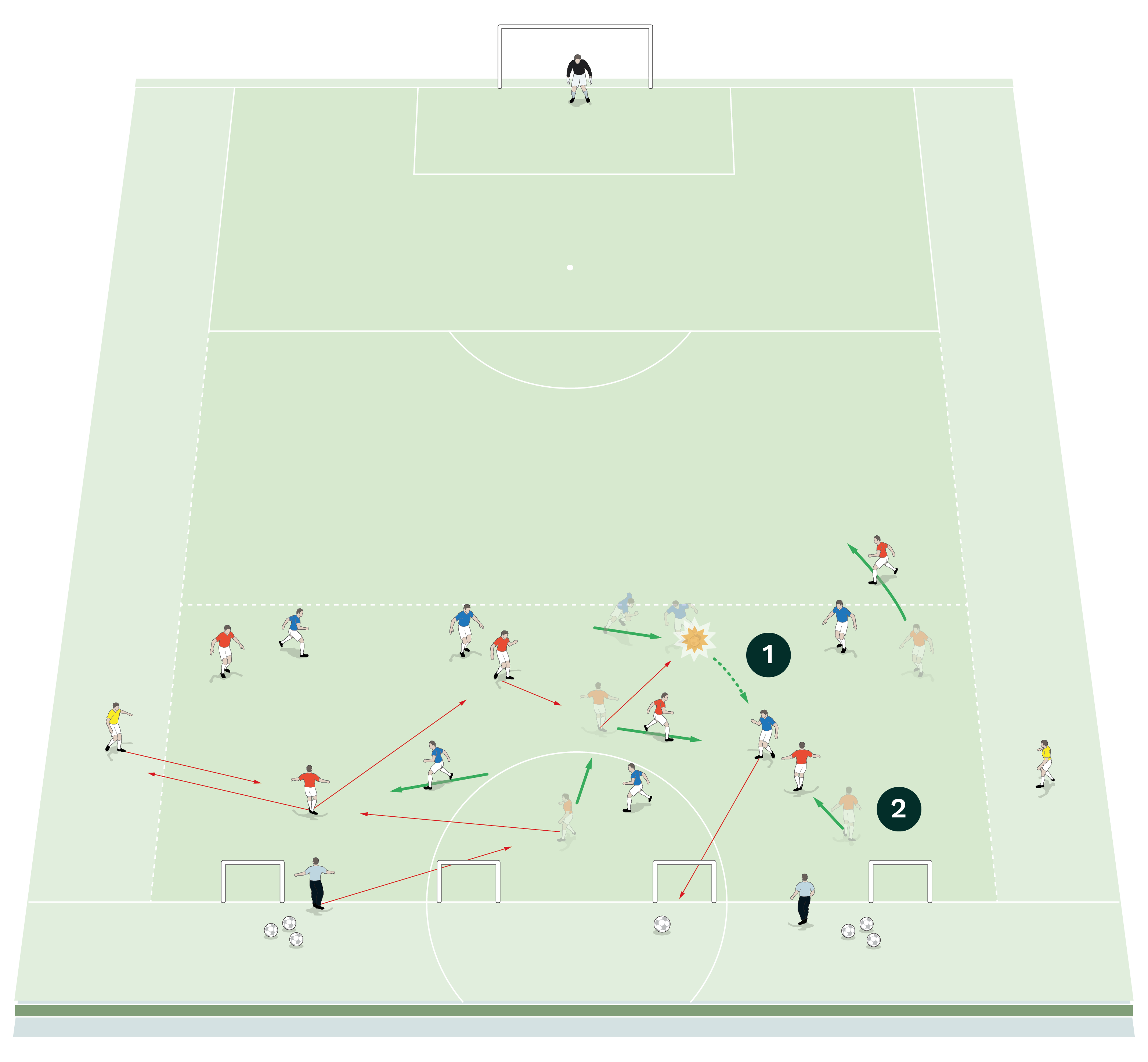
2. If the red attacking team lose possession, they must now counter-press to win the ball back
“In both exercises, we encourage the players to take risks. We want them to be creative”
[2c]
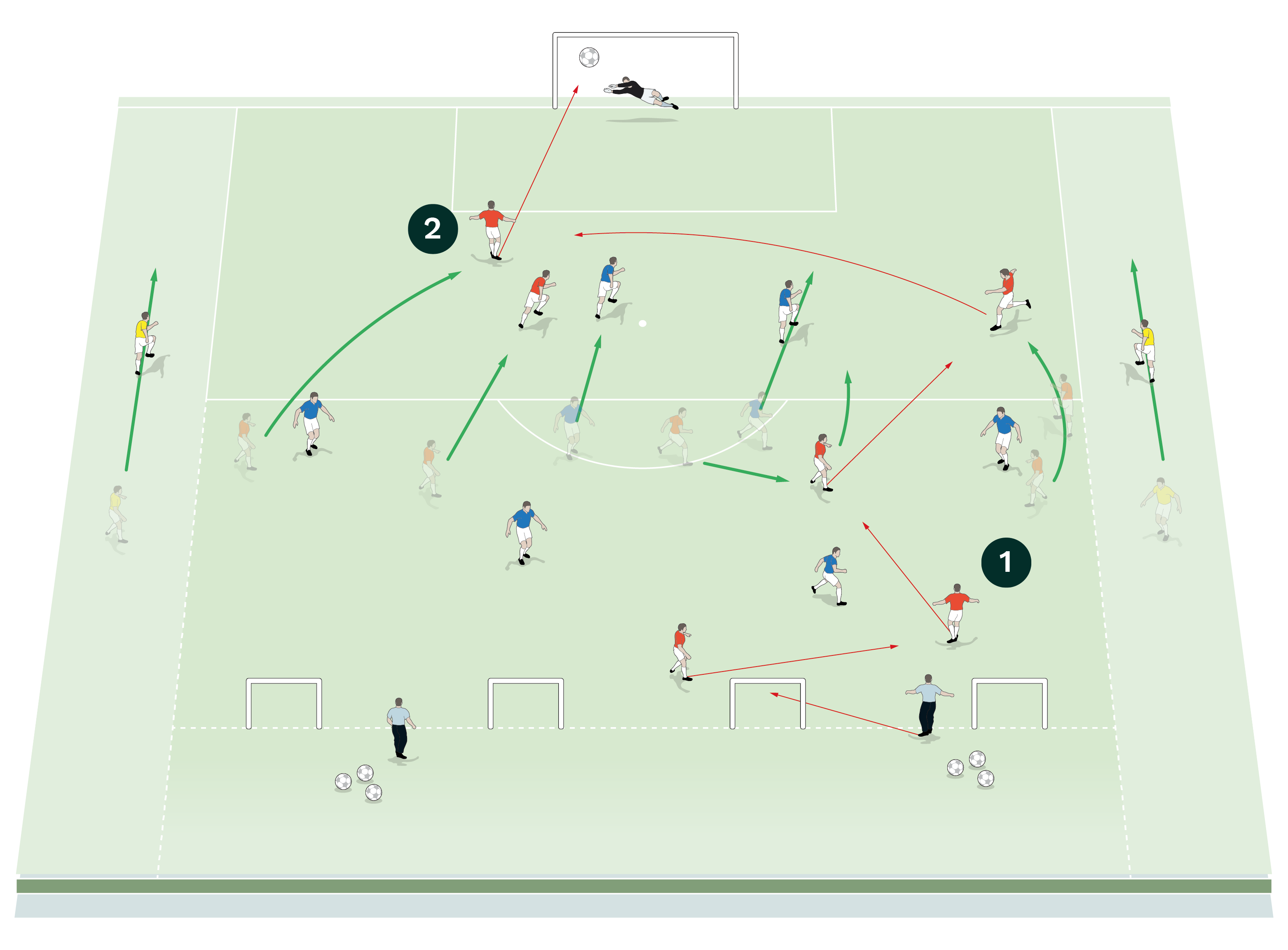
2. The attacking players are now looking for ways to combine and enter the penalty area to score but they can also decide to shoot from distance from outside the box
[2d]
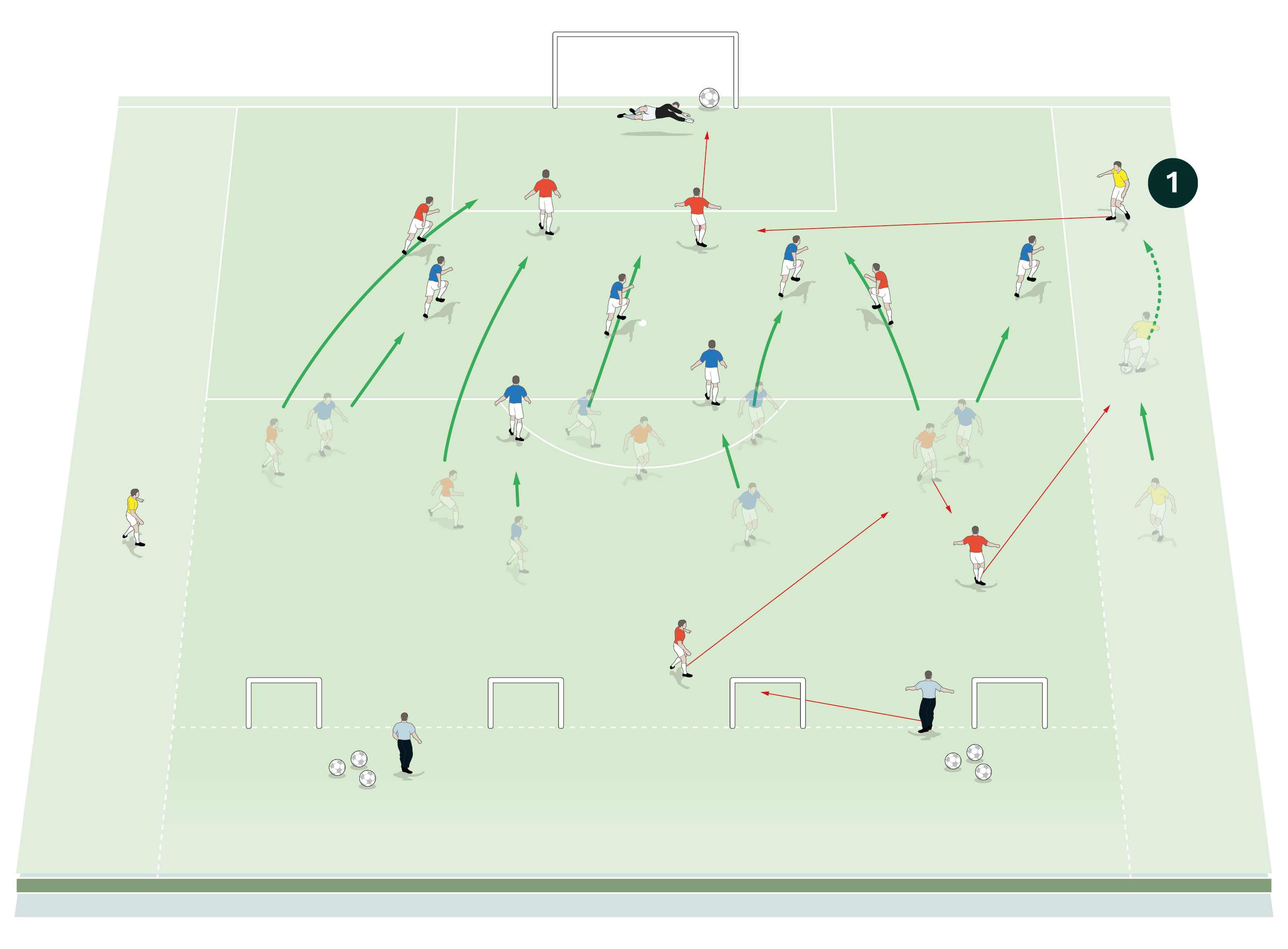
Block 1 is played in the zone furthest away from the main goal. The red attacking team is set up with three midfielders and three forwards, while the blue defending team is set up with a back four and two defensive midfielders.
The coach starts play by serving the ball into the attacking team and they combine using quick passing and movement to get in behind the backline with through passes and forward runs from the bottom third. Once an attacker has broken out of the red team’s defensive third and is played through, they can dribble with the ball towards the goal and finish past the keeper. They can also be supported in their breakout by two other red attackers, as shown [2a].
If the defending team wins the ball, they aim to score in one of the four mini goals as quickly as possible – the red attacking team must then counter-press to win the ball back, as shown [2b].
To add an extra challenge, as a progression we allow one or two blue defenders to make recovery runs and try to prevent the red attackers from scoring once they get in behind the backline. As a final progression, we allow all the blue defending players to recover to defend against the attack.
Block 2 is now played in the central zone. We reduce the length of the playing area, just using the top two thirds of the original area and we move the four target goals up as shown. The activity is now repeated in this new area using the same principles as we used in block 1. The attacking team are now looking for ways to combine and enter the penalty area to score, as shown [2c]. However, they can also decide to shoot from distance from outside the box. The supporting yellow full backs on either side can also now receive the ball to produce crosses into the penalty box, as shown [2d].
Block 3 is played in the penalty area. We again reduce the length of the playing area, now just using the penalty area and we move the four target goals to the edge of the area, as shown. The same aims and principles apply for both the attacking and defending teams. The attacking team are looking to make quick combinations and clever and creative finishes, while the yellow full backs still offer the option of crossing support from the sides, as shown [2e].
[2e]

2. The red attacking team are looking for quick combinations and clever and creative finishes
3. Alternatively, the reds could decide to attack using the support of crosses from the yellow full backs
COACHING POINTS
What are the key things to look for?
Key questions that we want to see players asking themselves during this session include: Is there space to attack in behind? Is there space to get into wide crossing positions? When is a good moment to shoot from distance? And how positive are our reactions to transition?
In both exercises, we encourage the players to take risks. We want them to be creative and also to recognise that if there is a turnover of possession, they should remain positive and counter-press quickly and aggressively in transition.
How would I put this in a game situation?
With both practices offering direction, opposition, and transition options for defenders, they are already very game-like. However, we could finish the session with a game and use it to check what the players have learnt from the session.
Related Files
Editor's Picks
Deep runs in the final third
Using the goalkeeper in build-up play
Pressing principles
Intensive boxes drill with goals
Penetrating the final third
Creating and finishing
My philosophy
Pressing initiation
Compact team movement
Coaches' Testimonials

Alan Pardew

Arsène Wenger

Brendan Rodgers

Carlos Carvalhal

José Mourinho

Jürgen Klopp

Pep Guardiola

Roy Hodgson

Sir Alex Ferguson

Steven Gerrard
Coaches' Testimonials

Gerald Kearney, Downtown Las Vegas Soccer Club

Paul Butler, Florida, USA

Rick Shields, Springboro, USA

Tony Green, Pierrefonds Titans, Quebec, Canada
Join the world's leading coaches and managers and discover for yourself one of the best kept secrets in coaching. No other training tool on the planet is written or read by the calibre of names you’ll find in Elite Soccer.
In a recent survey 92% of subscribers said Elite Soccer makes them more confident, 89% said it makes them a more effective coach and 91% said it makes them more inspired.
Get Monthly Inspiration
All the latest techniques and approaches
Since 2010 Elite Soccer has given subscribers exclusive insight into the training ground practices of the world’s best coaches. Published in partnership with the League Managers Association we have unparalleled access to the leading lights in the English leagues, as well as a host of international managers.
Elite Soccer exclusively features sessions written by the coaches themselves. There are no observed sessions and no sessions “in the style of”, just first-hand advice delivered direct to you from the coach.
